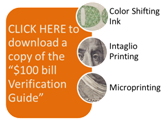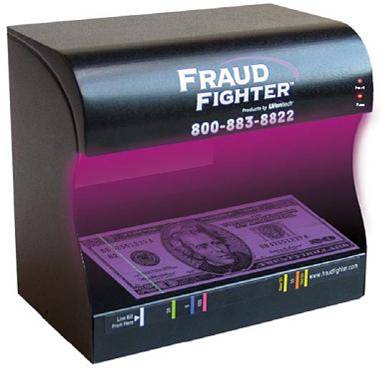Loss. Whether it happens in the form of shoplifting, cash register shortages, product shrinkage caused by employees or counterfeiting, hard economic times lead ordinary people to engage in conduct they wouldn't consider under normal circumstances. Risk management, once considered an afterthought, is now front and center among the priorities that companies pursue as they look for ways to prevent potential loss or, at the very least, minimize it.
 Heightened vigilance and increased attention to areas where loss might occur should be at the top of any risk management agenda. Training employees to be on the lookout for shoplifters or the monitoring of employees combined with tighter accounting and inventory controls to prevent employee theft are ways to minimize risk of loss. Effectively dealing with counterfeiting, however, requires more than mere training or increased surveillance.
Heightened vigilance and increased attention to areas where loss might occur should be at the top of any risk management agenda. Training employees to be on the lookout for shoplifters or the monitoring of employees combined with tighter accounting and inventory controls to prevent employee theft are ways to minimize risk of loss. Effectively dealing with counterfeiting, however, requires more than mere training or increased surveillance.
Battling counterfeiting and the harm it does to your business takes technology. Why? Because counterfeiting has become the domain of "techies". Almost everyone has access to sophisticated home computers, high resolution scanners and laser jet printers that produce almost picture-perfect documents and reproductions, all at relatively affordable prices. With this technology, any intelligent person with patience and a modicum of attention to detail can engage in producing passable counterfeit U.S. currency. While most of these fake bills are detectable to those who handle money frequently, they often deceive public-facing individuals such as store cashiers, vendors at a flea market or the waiter in a dimly-lit bar or restaurant.
If you still have doubts about whether counterfeit currency poses a problem for your business , consider this: $261 Million in counterfeit currency was taken from circulation in the U.S. by the United States Secret Service in 2011. That's the amount removed, not the total amount believed to be in circulation.
, consider this: $261 Million in counterfeit currency was taken from circulation in the U.S. by the United States Secret Service in 2011. That's the amount removed, not the total amount believed to be in circulation.
Your first line of defense against counterfeit currency is, of course, your staff. Training employees on what to look for in the behavior of a shopper and how to examine a bill for evidence of counterfeiting are both essential to your loss prevention efforts. However, technological advances have created fake bills of such high quality that they often evade detection by mere visual examination. This is why you should consider use of a counterfeit currency detector.
A properly trained employee using a currency detector can help you minimize, if not completely eliminate, the amount of fake bills your business takes in. A counterfeit currency detector will decrease that amount for two reasons: 1) Obviously, it enables your staff to identify "funny money" at point of sale, not while counting cash receipts at the end of the day when it's too late; and 2) It serves as a deterrent because counterfeiters are less likely to try to pass fake bills to businesses that actively engage in counterfeit detection.
Counterfeit money can be detected by, in increasing order of complexity and sophistication:
- Infra-Red Viewers
- Magnetic Ink Detector Devices
- UV Lights
- Advanced Analysis Devices which are designed to "read" the security elements contained in legitimate bills and include Machine Readable Character Reading Devices such as Data Compare Devices
 Finding the counterfeit currency detector (and price) that's right for your organization depends on your exposure to counterfeit currency. Any combination of a large volume of cash business, multiple locations, a large number of employees handling cash or operating in an environment where diligent examination isn't always convenient (there's that dimly-lit bar again) increases your exposure to counterfeit currency.
Finding the counterfeit currency detector (and price) that's right for your organization depends on your exposure to counterfeit currency. Any combination of a large volume of cash business, multiple locations, a large number of employees handling cash or operating in an environment where diligent examination isn't always convenient (there's that dimly-lit bar again) increases your exposure to counterfeit currency.
Loss-prevention leads to a healthier business. Investing in a low-cost counterfeit currency detector is a simple way to help you prevent loss.


